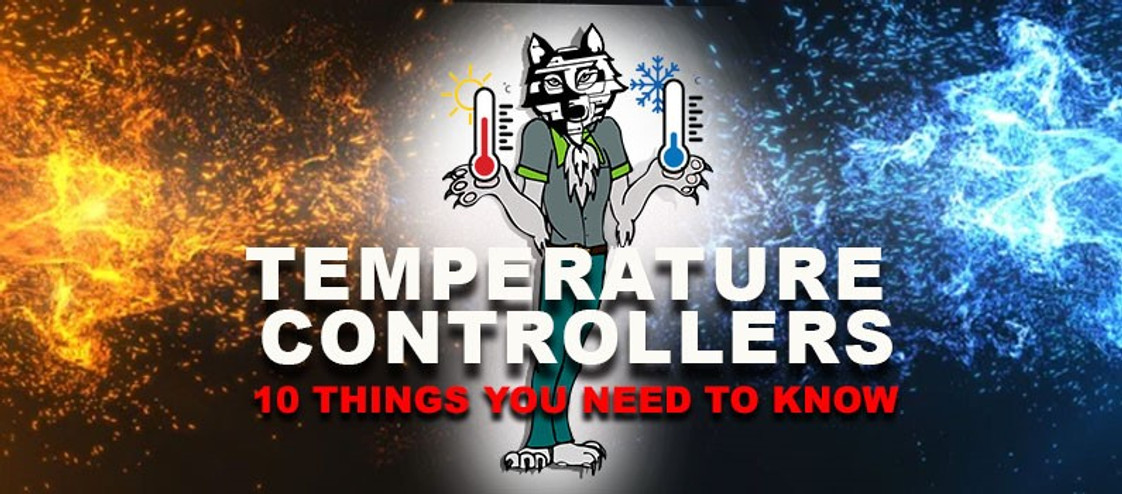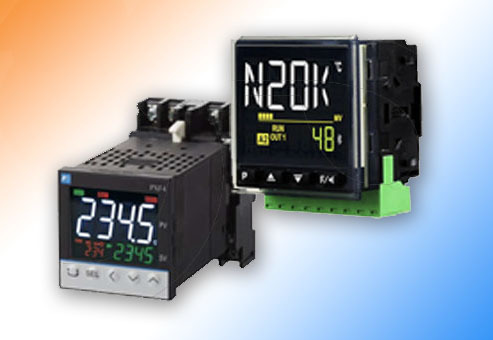
10 Factors to Consider When Buying a Temperature Controller
Posted by Beckie Sullivan on May 26th 2023
I’d like to start by thanking Instrumart for letting us use their blog post to create what you are about to read!
Temperature controllers are used in applications that require temperature to be regulated at a specific target. That target is also known as the setpoint.
When the sensed temperature is either above or below the setpoint, the temperature controller will send an output signal to turn on the necessary heating or cooling element to regulate the temperature back to the desired setpoint (target temperature).
The two main types of temperature controllers are closed-loop and open-loop. We’ll dive into that in another blog but for now let’s give a basic overview:
Open Loop Controllers
Open loop is the most basic form and applies to continuous heating/cooling with no regard to the actual temperature output.
The output signal is not measured or fed back for comparison.
Closed Loop Controllers
For closed loop applications, the output temperature is constantly being measured, and then adjusted, to maintain a setpoint (desired temperature).
Closed loop is far more sophisticated than open loop.
Now that we have those basics out of the way, let’s dive into the 10 things you need to find your temperature controller!
1. What temperature range do you need?
Figuring out your required setpoint, or target temperature, is always a great place to start!
2. What type of control action is needed?
Things can get a little complicated on this question due to the sheer number of options. We’ll keep it short with the most commonly needed.
- PID Control – You might also find this referred to as proportional, integral or derivative. This controller uses process feedback to determine how to maintain temperature.
- On-Off Control – This is a simple option (ON or OFF) that is common in analog controllers. Generally these applications are very basic and used in direct heat/cool applications.
- Profile Control/Rate of Ramp (Ramp/Soak) – This function allows you to program a setpoint change (ramp) as well as the duration of time that setpoint is held (soak). Great when you need hands-free control until the scheduled programming needs to be updated.
- High Performance Control – These are great for applications that are high power and high speed. Features include quick input sampling rates, a high number of input and output points as well as enhanced math functions.
- Multi-Loop Control – If you need to accept more than one input variable that is configured via desktop software, take a look! All programming is done on external software and this controller does not have a display.
- Limit Devices – These are used to shut power down to a process when the high or low limit setpoints have been exceeded for safety purposes.
3. What power supply is available to power the controller?
This should be relatively easily to answer after that last question we threw at you. The most common options are 12-24VDC or 100-240VAC
4. What amperage and voltage is required for the load?
Remember at the beginning we mentioned the heating or cooling device that will help regulate the temperature back to the setpoint?
That, the heating or cooling device, is the load and now we need to know the voltage and amperage so we can select the proper controller output. The controller might be able to switch this load directly or it may require an SSR, or similar external device, to be a salve to the controller and do the heavy lifting.
5. What type and number of outputs are needed to control load or load handling devices?
Every controller has an output. Each output can do several things such as control a process, initiate an alarm or retransmit the process value to a programmable logic controller.
7. What type of display do you need?
Common options include no display, a basic display or a full touchscreen display.
8. What environment will the controller be exposed to and are there any necessary agency approvals?
Do you have a dusty or hazardous environment? What country will the controller be used in?
9. Do you need any auxiliary functions?
By ‘auxiliary functions’ we are basically asking what other information needs to be controlled or communicated. Options include communications, remote setpoint, digital input and retransmission among others.
- Retransmission allows information to be sent to a PLC
- A remote setpoint is great when you need to adjust a setpoint from another device or PLC
- Digital input is where a digital signal is sent to the controller from another device (PLC, pushbutton) which then activates a feature/function in the controller
10. Why type of input is provided by the sensors?
The type of input signal and sensor will vary depending on the type of controlled process.
Common input sensors include linear minivolt, volt or milliamp inputs as well as resistive thermal devices (RTDs). Many controllers also offer sensor break detect; it will stop your process as soon as a failure is detected.
In Summary
Temperature controllers are used anywhere that requires a given temperature to remain stable.
Whether heated, cooled or both to hold steady at the target temperature; temperature controllers can do it regardless of the ups and downs of the environment around it.
The options can seem overwhelming, however, hopefully this helped you look at the information you need to know.
Still need help? We’re here!
Did You Know?
Temperature controllers are used right in your own home!
- Home thermostat
- Oven
- Refrigerator
- Hot water heater
What Does This Mean? A Quick Review!
PID Control
PID is an acronym for Proportional, Integral and Derivative. This controller uses process feedback to determine how to maintain temperature.
On-Off Control
This is a simple option (ON or OFF) that is common in analog controllers. Generally these applications are very basic and used in direct heat/cool applications.
Setpoint
A setpoint is the target value (temperature) set by an operator which the controller is meant to hold steady.
Analog
Analog controllers are the most basic type. They are low cost, simple and generally used in non-critical ON-OFF applications.
The ‘display’ is generally just a knob dial.

